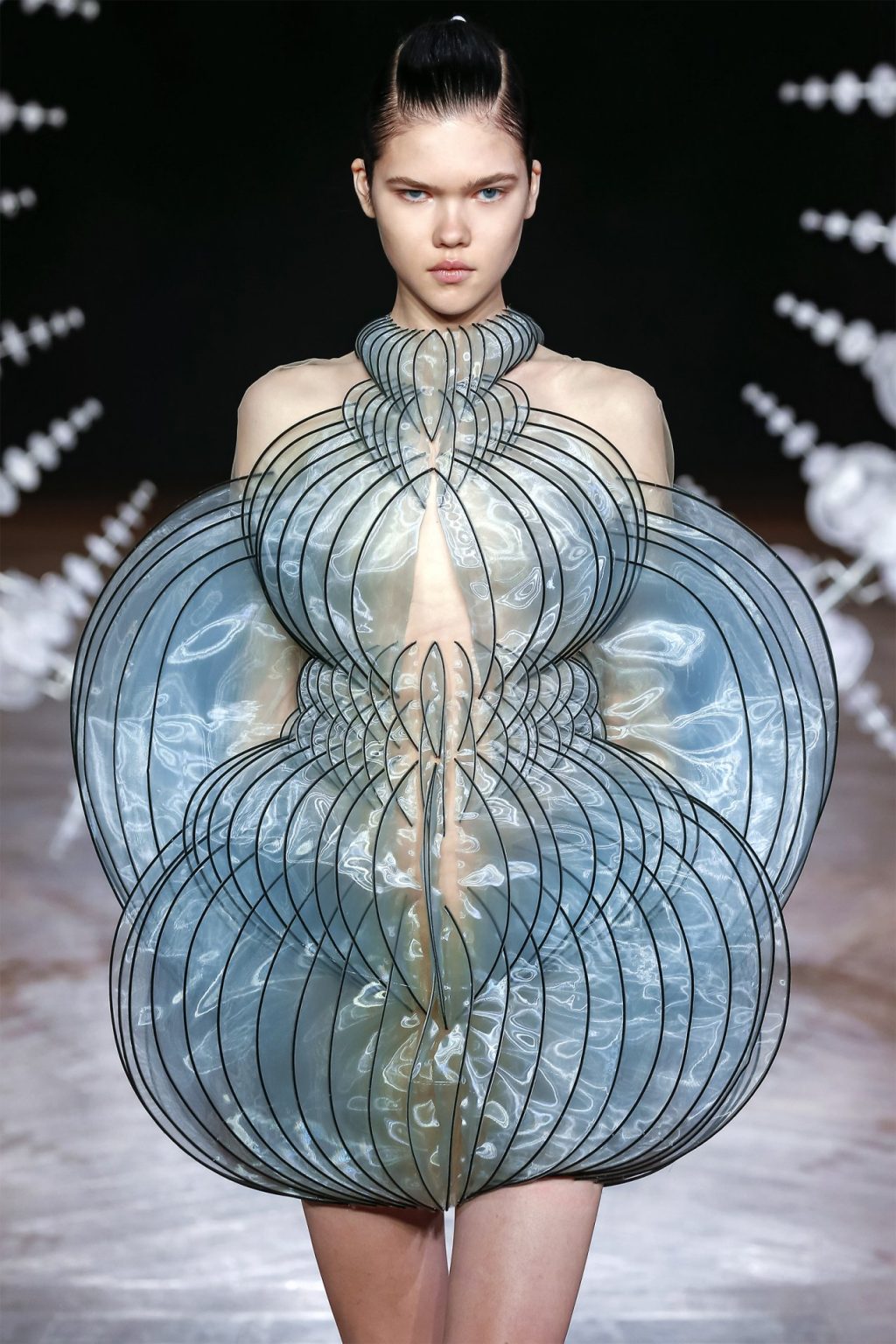Iris Van Herpen “Sculpting the Senses”
Modern and traditional, controlled and chaotic, apparent and hidden in details… In her book titled ‘Sculpting Senses’, which shares the same name as her exhibition at MAD Paris. Iris Van Herpen takes us through her creative journey shaped by her own art and provides us with a platform to witness the story of designs which are the ultimate passengers of this journey.
Throughout her fifteen-year career showcasing her designs, we witness the universe of Iris Van Herpen through over a thousand creations. In the flow of constantly evolving concepts that somehow circle back to her, we can say that the book has self-curated itself. This curation consists of nine chapters, each serving as the DNA of everything that moves the artist. Regarding the production process, she says ‘Of course, as a designer or as an artist, you’re making your work, but I realise more and more that the works I’m making are also creating me.’ truly reflect the mission of the book.



Water is the first one of these themes. It also delves into the fluidity of the artist’s creative vision over the years. Seeing how Iris Van Herpen’s works, as seen in the exhibition, have evolved over the years with this concept. Showcasing us the clearest way to experience the contrast between her early years and now. In the Carte Blanche project which revolves completely under water, she has poetically addressed the tranquility of the human body’s relationship with water. This is where the book diverges from her other works. In this case, instead of presenting her universe to us, we observe her while she grapples with it.
Another enchanting concept is Synesthesia. Iris Van Herpen meticulously arranges sensory experiences conveyed through the dimensions, textures, and shapes of her designs as a result of effortless harmony. The relationship with the concept of synesthesia has become ingrained in her own working method. While positioning this relationship within her designs, we examine the inspiration she draws from neurology and the brain. We are literally looking at sculpting of the senses.
Interdisciplinary collaborations are signature elements for Iris Van Herpen. In the book, she translates her complex designs into writing while incorporating perspectives from Cloé Pitiot and Tilda Swinton, creating a work that transcends traditional book formats.
Iris Van Herpen, as she mentioned in our dialogue, provides us with the opportunity to deeply explore the unpredictable dynamics of collaborating with another artist, as she also stated in our conversation. Despite drawing inspiration from chaos and disorder, the artist describes herself as a ‘control freak.’ It is truly exciting to examine these dynamics within the unique narrative style of the book.
For Iris Van Herpen, who embraces fashion as an art form and brings it together with us on an interdisciplinary journey, ‘Sculpting the Senses’ offers an autobiographical archive journey. Providing us with a glimpse into the stories of creation that take part behind the stitches.